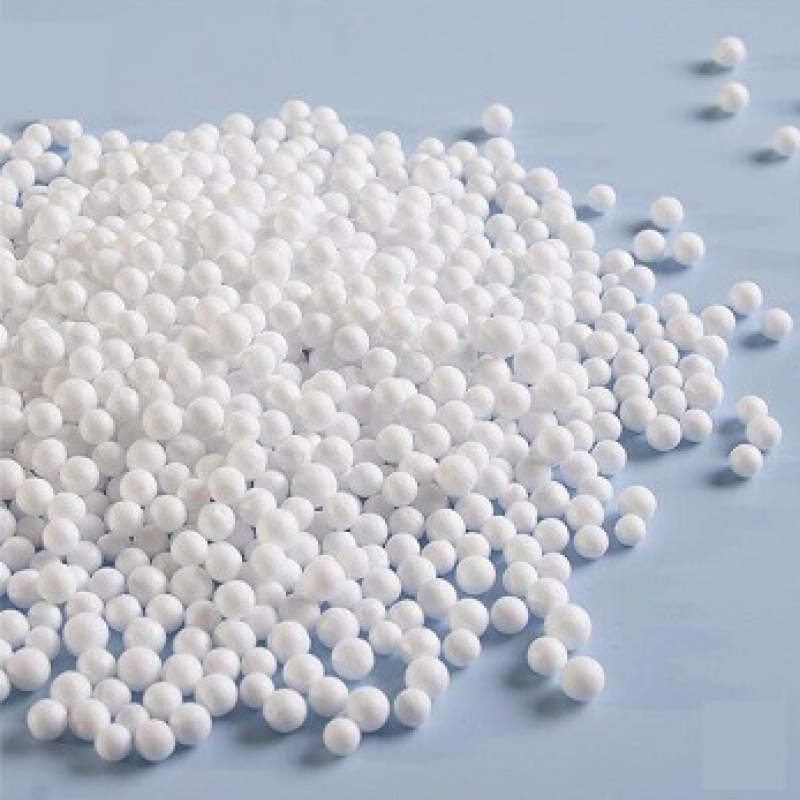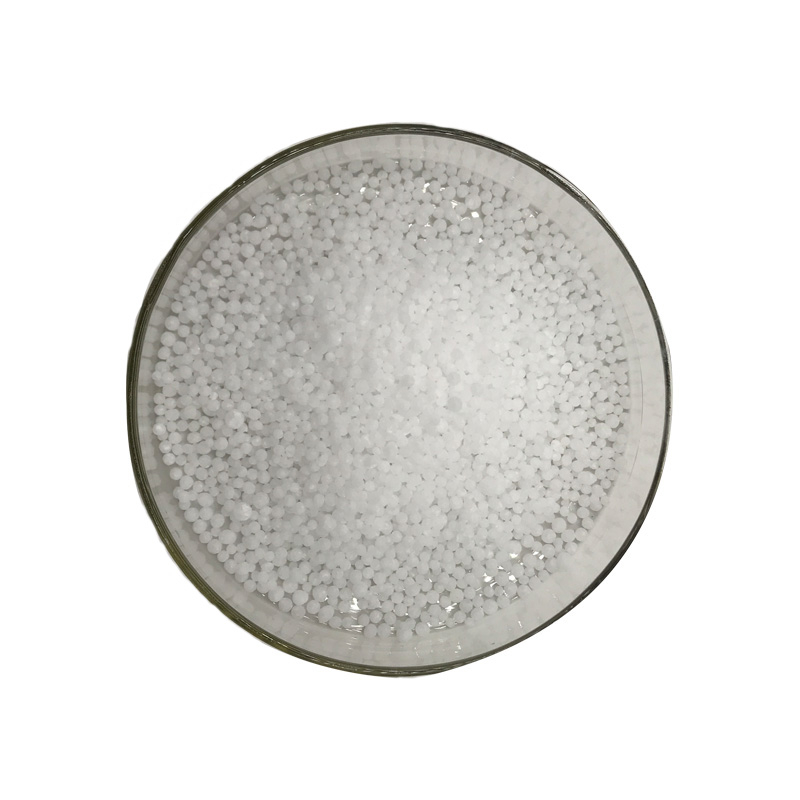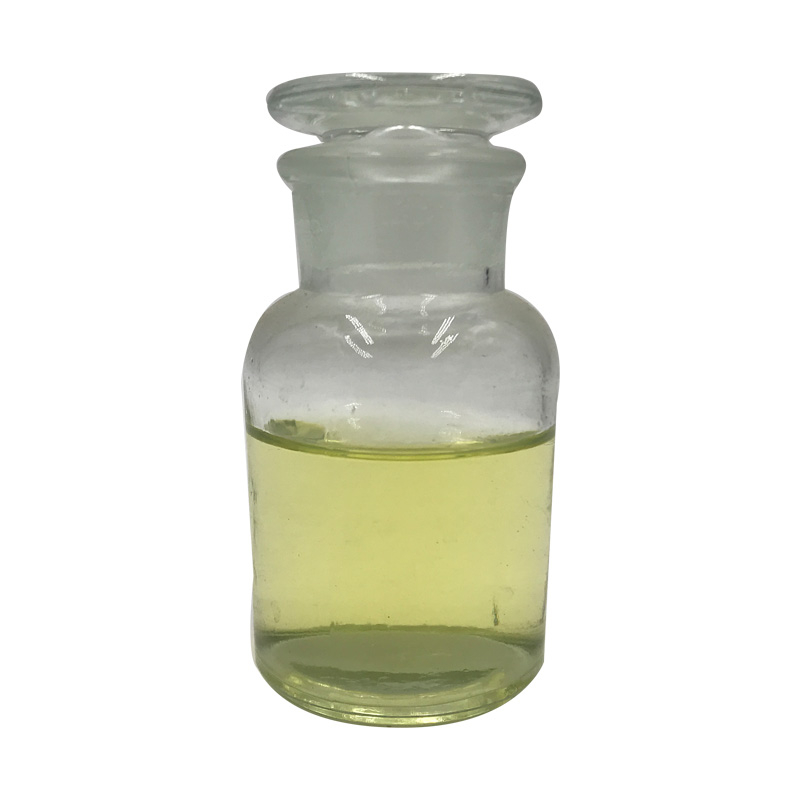Products Description of NEODYMIUM NITRATE HEXAHYDRATE CAS#16454-60-7The chemical formula of neodymium nitrate is Nd(NO3)3·6H2O. The molecular weight is 438.35. There are two variants, α and β, with a transition temperature of about 22°C. It is easily soluble in water and ethanol. It forms anhydrous salts by vacuum dehydration and decomposes by strong heat. It is easy to form complex salts with other nitrates.For example: 3Mg(NO3)2·2Nd(NO3)3·24H2O, 3Mn(NO3)2·2Nd(NO3)3·24H2O, 3Ni(NO3)2·2Nd(NO3)3·24H2O, etc.
Contact Now
Products Description of Lantanium Nitrate CAS#10277-43-7Lanthanum nitrate hexahydrate is a colorless crystalline solid with a distinctive nitrate odor. - It is relatively stable at room temperature, but can decompose when heated to produce toxic nitrous oxide gas.
Contact Now
Products Description of Cobalt Nitrate CAS#10026-22-9Cobalt nitrate hexahydrate is a red crystalline powder. Solubility: easily soluble in water, ethanol, acetone and methyl acetate, slightly soluble in ammonia. It is mainly used to make catalysts, invisible inks, cobalt pigments, ceramics, sodium cobalt hexanitrite, etc. On October 27, 2017, the World Health Organization's International Agency for Research on Cancer published a preliminary list of carcinogens for reference.
Contact Now
Products Description of Copper (II) Nitrate Hydrate CAS#10031-43-3Copper nitrate trihydrate is a white powder, easy to deliquesce, easily soluble in water, with a solubility of 45g at 0℃. It can be reprecipitated by adding concentrated nitric acid. It decomposes into nitrogen oxides and copper oxide when red hot, and is decomposed by hydrochloric acid. Common hydrates are hexahydrate Cu(NO3)2·6H2O and trihydrate Cu(NO3)2·3H2O. The former is a blue crystal with a relative density of 2.074.
Contact Now
Products Description of Chromic chloride hexahydrate CAS#10060-12-5Purple monoclinic crystal. Relative density 1.76. Melting point 83℃. Soluble in water, ethanol, slightly soluble in acetone, insoluble in ether. Deliquescent. Toxic!Chromic chloride hexahydrate Chemical PropertiesMelting point 83 °Cdensity 1.76 g/mL at 25 °C(lit.)storage temp. Inert atmosphere,Room Temperaturesolubility Methanol (Slightly), Water (Slightly)form Powder/SolidSpecific Gravity1.76color Reddish-violetPH2.0-3.0Water Solubility Soluble in water and alcohol.
Contact Now
2-Ethylhexyl Nitrate CAS#27247-96-7Mainly used as cetane number improver for diesel fuel. Adding an appropriate amount of 2-ethylhexyl nitrate to diesel can significantly increase the cetane number of diesel and improve the combustion performance of diesel.
Contact Now
Products Description of Calcium Ammonium NitrateCAS#15245-12-2Calcium ammonium nitrate is a nitrogen fertilizer made by melting ammonium nitrate with a certain proportion of limestone and dolomite powder. The ingredients are a mixture of NH4NO3, CaCO3 and MgCO3. Calcium ammonium nitrate contains 21% to 26% nitrogen (N), and is grayish white or light yellow granules or powder. The aqueous solution is weakly alkaline.Calcium ammonium nitrate is the world's most soluble calcium-containing chemical fertilizer.
Contact Now
Products Description of Bismuth trioxide CAS#1304-76-3Yellow monoclinic crystals. Soluble in acid, insoluble in water and alkali. Can be reduced by carbon and hydrogen. Made by heating and decomposing bismuth nitrate. Used to make metallic bismuth, catalysts and bismuth oxide superconductors.Bismuth oxide is also known as "bismuth trioxide". Pure products include α-type, β-type and δ-type. α-type is yellow monoclinic crystal with a relative density of 8.9 and a melting point of 825℃. It is soluble in acid but insoluble in water and alkali.
Contact Now
Products Description of Urea CAS#57-13-6When the temperature is below 20℃ and the relative humidity is below 70%, urea not only does not absorb moisture, but also evaporates water to reduce its water content; when the temperature exceeds 20℃ and the relative humidity is higher than 80%, it begins to absorb moisture, and in severe cases, it becomes a paste. When the air turns dry again, it will re-agglomerate, and its degree is second only to ammonium nitrate.
Contact Now
Products Description of Calcium chloride CAS#10048-52-4Anhydrous calcium chloride is a white porous frit or granule. It is easy to deliquesce. The melting point is 782℃, the density is 2.15g/cm3, the boiling point is higher than 1600℃, it is easily soluble in water and releases a lot of heat, and it is also soluble in ethanol and acetone. The most common is calcium chloride hexahydrate CaCl2·6H2O, colorless trigonal crystal, easy to deliquesce, bitter and salty taste, density 1.71g/cm3.
Contact Now
Products Description of Potassium iodide CAS#7681-11-0 Potassium iodide is an ionic compound, in which iodine ions can form dark yellow precipitated silver iodide with silver ions (decomposed by light and can be used to make high-speed photographic film), so silver nitrate can be used to test the presence of iodine ions. As a component of thyroid hormone, iodine is closely related to the basal metabolism of livestock and poultry, and participates in almost all metabolic processes.
Contact Now
Products Description of Oleic acid CAS#112-80-1Insoluble in water, soluble in benzene, chloroform, miscible with methanol, ethanol, ether and carbon tetrachloride. Because it contains double bonds, it is easily oxidized by air, producing an unpleasant odor and turning yellow. When treated with nitrogen oxides, nitric acid, mercurous nitrate and sulfurous acid, it can be converted into oleic acid. When hydrogenated, it becomes stearic acid. The double bonds can easily react with halogens to form halogenated stearic acid.
Contact Now
Products Description of Oleic CAS#112-80-1Insoluble in water, soluble in benzene, chloroform, miscible with methanol, ethanol, ether and carbon tetrachloride. Because it contains double bonds, it is easily oxidized by air, producing an unpleasant odor and turning yellow. When treated with nitrogen oxides, nitric acid, mercurous nitrate and sulfurous acid, it can be converted into oleic acid. When hydrogenated, it becomes stearic acid. The double bonds can easily react with halogens to form halogenated stearic acid.
Contact Now
Epichlorohydrin CAS# 106-89-8Epichlorohydrin is a sort of organochlorine compound as properly as epoxide. It can be used as an industrial solvent. It is a exceptionally reactive compound, and can be used for the manufacturing of glycerol, plastics, epoxy glues and resins, and elastomers. It can additionally be used for the manufacturing of glycidyl nitrate and alkali chloride, used as the solvent of cellulose, resins, and paint as properly as being used as an insect fumigant.
Contact Now
Product DetailsProducts Description of Octadecenoic Acid CAS#112-80-1Insoluble in water, soluble in benzene, chloroform, miscible with methanol, ethanol, ether and carbon tetrachloride. Because it contains double bonds, it is easily oxidized by air, producing an unpleasant odor and turning yellow. When treated with nitrogen oxides, nitric acid, mercurous nitrate and sulfurous acid, it can be converted into oleic acid. When hydrogenated, it becomes stearic acid. The double bonds can easily react with halogens to form halogenated stearic acid.
Contact Now
Products Description of Tetraethylammonium bromide CAS#71-91-0Tetraethylammonium bromide is an organic substance with the chemical formula (C2H5)4NBr, which is white crystals. It is hygroscopic. It is easily soluble in water, ethanol, chloroform and acetone, slightly soluble in benzene, and its solubility in water is 2795 g/L (25°C). The pH of a 10% aqueous solution is 6.5, and the pH remains unchanged when heated to 95°C for 28 hours. It is irritating.
Contact Now
Ethanol CAS# 71-23-81-propanol is the compound with the hydrogen atom in the propane molecules being changed by way of hydroxyl group. Because the hydroxyl crew can alternative the hydrogen atoms contained in the carbons in the two terminals of carbon chain or center carbon, hence producing two isomers, n-propyl alcohol and isopropyl alcohol.The chemical property of the 1-propanol is comparable to that of ethanol.
Contact Now
Products Description of Sodium dodecyl sulfate CAS#151-21-3Sodium dodecyl sulfate (SDS), with the chemical formula C12H25NaO4S, is a potent anionic surfactant that is soluble in water and widely used for its exceptional emulsifying, foaming, and wetting properties. It is a white crystalline powder that plays a critical role in the formulation of detergents, cleaners, and personal care products, and is particularly instrumental in protein electrophoresis as a denaturing agent.
Contact Now
Products Description of (Z)-N-9-octadecenylpropane-1,3-diamineCAS#7173-62-8Colorless liquid(Z)-N-9-octadecenylpropane-1,3-diamine Chemical PropertiesBoiling point 435.6±28.0 °C(Predicted)density 0.851±0.06 g/cm3(Predicted)vapor pressure 0.002Pa at 20℃pka10.67±0.19(Predicted)Water Solubility 36mg/L at 23℃LogP0EPA Substance Registry SystemN-Oleyl-1,3-propanediamine (7173-62-8)Factory and Equipment ShowFast delivery timeInventory 2-3 working days New production 7-10 working days
Contact Now
Products Description of CALCIUM SACCHARIN CAS#6485-34-3CALCIUM SACCHARIN is a white crystal or white crystalline powder with no or slight fragrance. It has a very strong sweet taste, and the sweetness of its dilute solution is about 500 times that of sucrose. Saccharin calcium can be dissolved in 1.5 ml of water and ethanol.CALCIUM SACCHARIN Chemical PropertiesOdorat 100.00?%.
Contact Now
Products Description of Sulfide Sodium CAS#1313-82-2When sodium polysulfide impurities are present, the sodium sulfide will show different degrees of color changes due to the influence of factors such as the length of the sulfur chain in the sodium polysulfide. Common colors include pink, brownish red, and khaki blocks.
Contact Now
Products Description of Quercetin CAS#117-39-5Yellow needle-shaped crystalline powder. It is heat stable, with a decomposition temperature of 314°C. It can improve the light resistance of pigments in food and prevent the change of food flavor. It will change color when it encounters metal ions. It is slightly soluble in water and easily soluble in alkaline aqueous solution. Quercetin and its derivatives are a class of flavonoid compounds widely found in various vegetables and fruits. Such as onions, sea buckthorn, hawthorn, sophora japonica, tea, etc.
Contact Now
Products Description of 1,3-Butanediol CAS#107-88-0Transparent colorless hygroscopic viscous liquid with a weak special taste. Almost odorless. Boiling point 207.5℃, relative density (4:1.0059, refractive index (nD20) 1.4401, freezing point <-50℃, flash point 121.1℃. Has a certain antibacterial effect.
Contact Now
Products Description of 6,7-Dimethoxy-1,2,3,4-tetrahydroisoquinoline hydrochloride CAS#2328-12-36,7-Dimethoxy-1,2,3,4-tetrahydroisoquinoline hydrochloride is a chemical with CAS number 2328-12-36,7-Dimethoxy-1,2,3,4-tetrahydroisoquinoline hydrochloride Chemical PropertiesMelting point 260-265 °C(lit.)storage temp. Keep in dark place,Sealed in dry,Room Temperaturesolubility soluble25mg/mL, clear, colorless (1N NaOH in methanol)form Shiny Flakes or Crystalline Powdercolor White to slightly beigeBRN 3634126InChIKeySHOWAGCIRTUYNA-UHFFFAOYSA-NCAS DataBase Ref
Contact Now



































